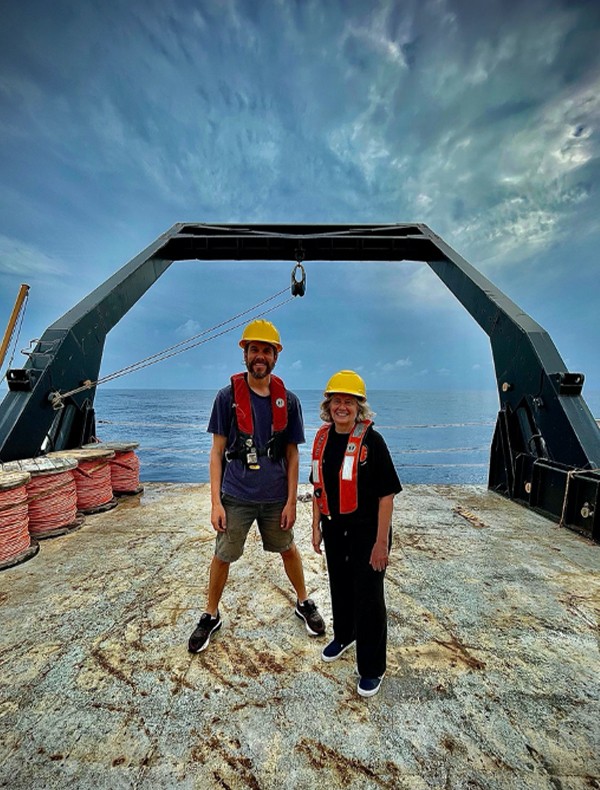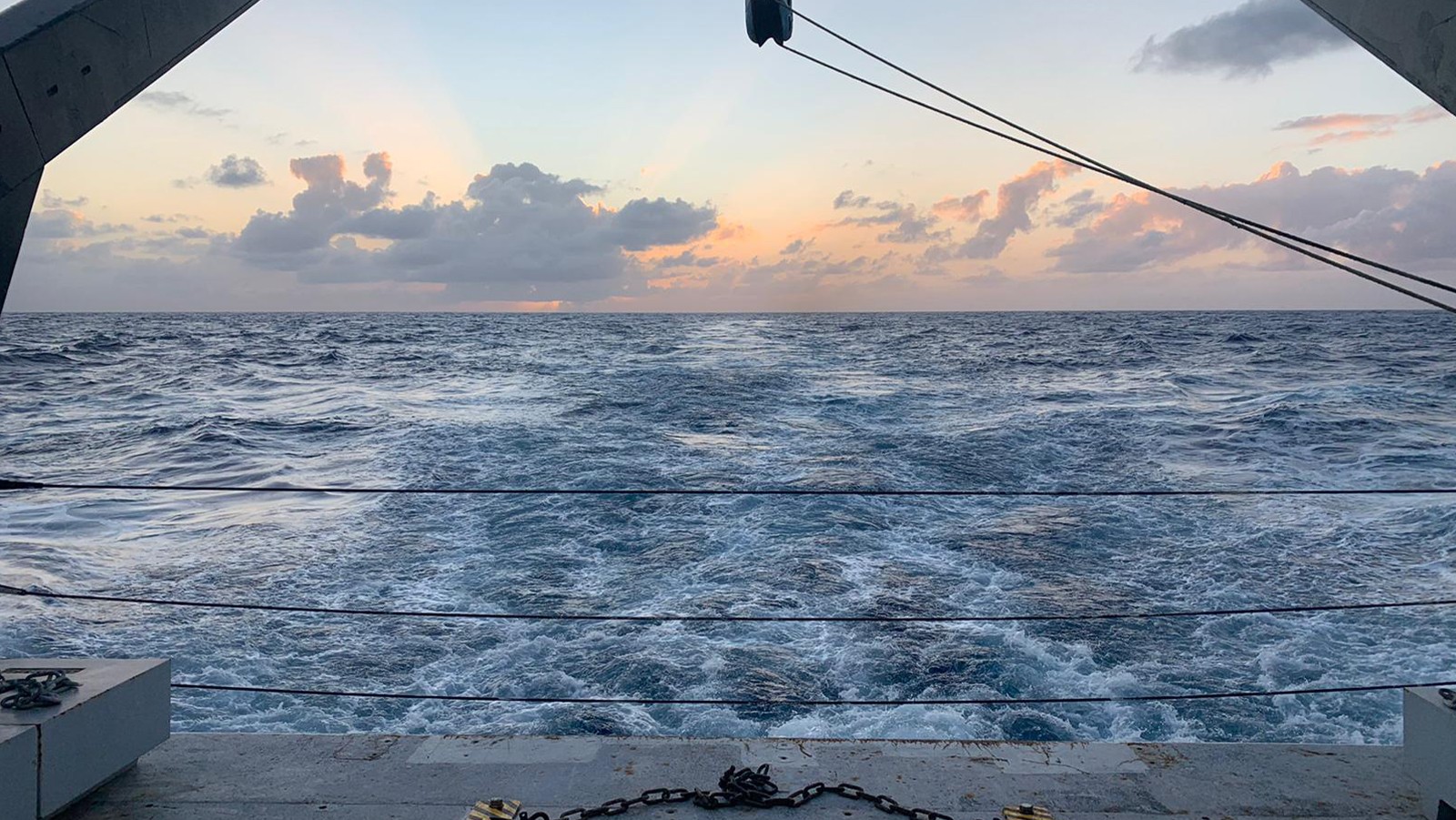The PIRATA (Prediction and Research Moored Array in the Tropical Atlantic) 2021 cruise aboard NOAA’s Ronald H. Brown has returned home! During their 41 days at sea, the cruise facilitated a collaboration between researchers with NOAA’s Atlantic Oceanographic and Meteorological Lab (AOML) and Fearless Fund, an organization dedicated to ocean solutions, supported by the U.S. Department of Energy (DOE). This collaboration targets the removal of carbon dioxide from ocean waters by the growth and harvest of seaweed biomass, known as Sargassum.
Sargassum is a type of floating brown alga, commonly called “seaweed.” These alga float at the sea surface, where they can aggregate to form large mats in the open ocean. This floating habitat provides food, protection, and breeding grounds for hundreds of diverse marine species. When Sargassum sinks to the seafloor, it provides energy in the form of carbon to fish and invertebrates in the deep sea.
In 2011, the geographic range for this algae expanded from the Sargasso Sea to the tropical Atlantic and began coming ashore along Caribbean and US coastlines. Although Sargassum habitats provide food and protection for a large number of fish species, they can have negative consequences for the environment, including low oxygen in coastal waters and shading of sea grasses. Sargassum can also have negative impacts for the economy because tourists avoid beaches when it washes ashore. This project seeks to provide a management solution to wide-scale inundation of beaches, while also repurposing the Sargassum.
The Fearless team, led by PI Alyson Myers, joined the PIRATA cruise to expand our understanding of the Sargassum production system, which extends from West Africa to Brazil, the Caribbean, and US regions of the tropical and subtropical Atlantic. The team ran multiple experiments during the cruise, working with AOML chief scientist Greg Foltz and his team to collect seawater samples for nutrient analysis. AOML’s Ocean Chemistry and Ecosystems Division will conduct the post-cruise analysis of the nutrient samples.

“For several years we have recorded Sargassum sightings during PIRATA cruises, and it has been a goal of ours to measure nutrients routinely during our cruises. Fearless Fund provides the personnel and some funding to do this, and they benefit from using our CTD frame/bottles for water samples. So it’s a mutually beneficial collaboration,” said AOML oceanographer Greg Foltz.
The source of nutrients for Sargassum production is not well known, although scientists are looking to river plumes from the Amazon and the Congo, as well as to upwelling (bringing colder, carbon-dioxide rich subsurface waters to the ocean’s surface). This team sought to understand organisms that may use Sargassum as a habitat, but few were observed in multiple casts of a neuston net during the cruise. The team also studied the structure and formation of long lines of Sargassum that aggregate at the convergence of currents.
Another experiment conducted was a CO2 sequestration test, which involved sinking biomass to the deep sea. As CO2 dissolves, the pH of ocean water decreases in a process known as acidification, which has negative consequences for shelled organisms and their predators. The Sargassum will be retrieved during next year’s PNE cruise to assess its decay rate and potential for CO2 sequestration. As the US, other countries, and corporations seek to reduce CO2 levels for global climate goals, the team is evaluating the best uses of Sargassum to assist in storing the carbon dioxide already in the atmosphere.
This initiative is a multi-agency collaboration supported by the US Department of Energy ARPA-E (Advanced Research Projects Agency-Energy) MARINER (Macroalgae Research Inspiring Novel Energy Resources) program and NOAA. With multifaceted collaborations such as this, it is expected that effective science-based solutions can potentially meet climate goals in the future. Plans are already in place to continue and expand on this fruitful collaboration during next year’s PIRATA cruise.
